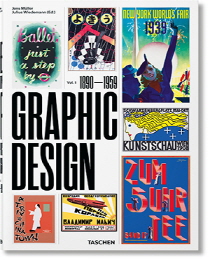In this mighty first volume, Jens Müller traces 70 years of graphic design, designers, and developments from the late 19th century through the economic boom after World War II, spanning designs that would form the basis for further revolutions. Year-by-year spreads are combined with in-depth features on hundreds of landmark projects, profiles of industry leaders, as well as visual timelines of each decade.
History is a complex business. Fortunes boom and bust, empires wax and wane, and change—whether social, political, or technological—has its winners, its losers, its advocates, and its enemies. Through all the turbulent passage of time, graphic design—with its vivid, neat synthesis of image and idea—has distilled the spirit of each age.
This book offers a comprehensive history of graphic design from the end of the 19th century to the remains of World War II. It traces the evolution of this creative field from its beginning as poster design to its further development into advertising, corporate identity, packaging, and editorial design. Organized chronologically, the volume features over 2,500 seminal designs from all over the world, 71 of which are profiled in detail besides 61 leaders in the field, including Alphonse Mucha (chocolate advertisements), Edward Johnston (London Underground logo and typeface), El Lissitzky (constructivist graphics), Herbert Matter (photomontage travel posters from Switzerland), Saul Bass (animated opening titles), and A. M. Cassandre (art deco posters).
With his sweeping knowledge of the field, author Jens Müller curates the standout designs for each year alongside a running sequence of design milestones. Meanwhile, in his introductory essay, David Jury situates graphic design from its point of origin in early printing, engraving, and lithography to striking creative developments in the 19th century. Each consecutive decade is then prefaced by a succinct overview as well as a stunning visual timeline, offering a vivid display of the variety of graphic production in each decade as well as the global landscape which it at once described and defined.
As we move on from and reflect upon the 20th century, this staggering collection represents the foundations of what would influence some of the fastest changing creative fields, and a long-overdue recognition of the enormous contribution graphic design has made to economics, politics, social causes, arts, media, and the way we see the world.
A second volume in preparation will cover the period from 1960 to today.
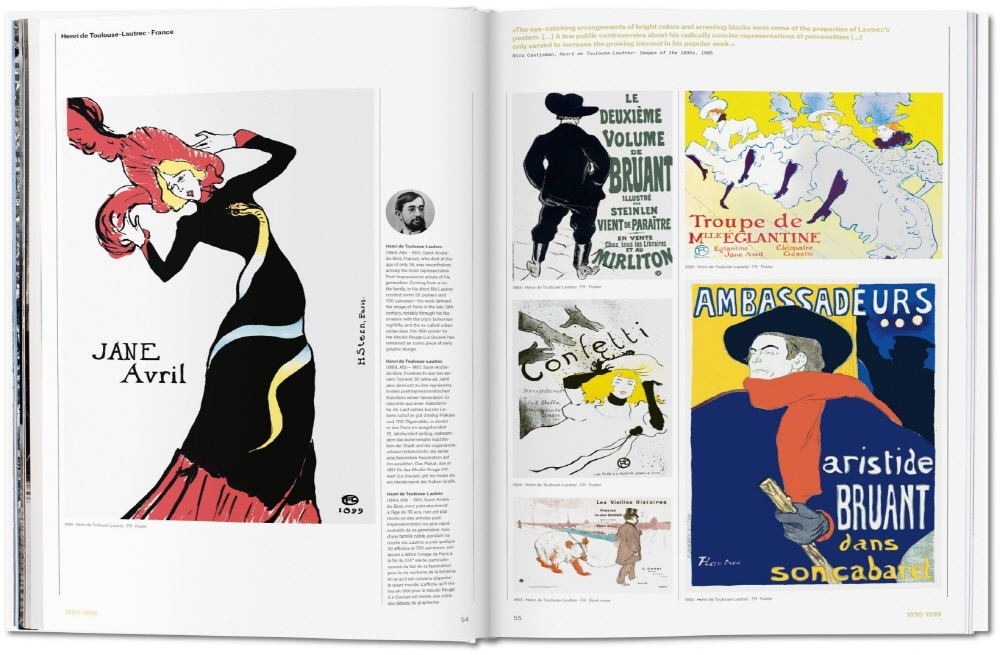
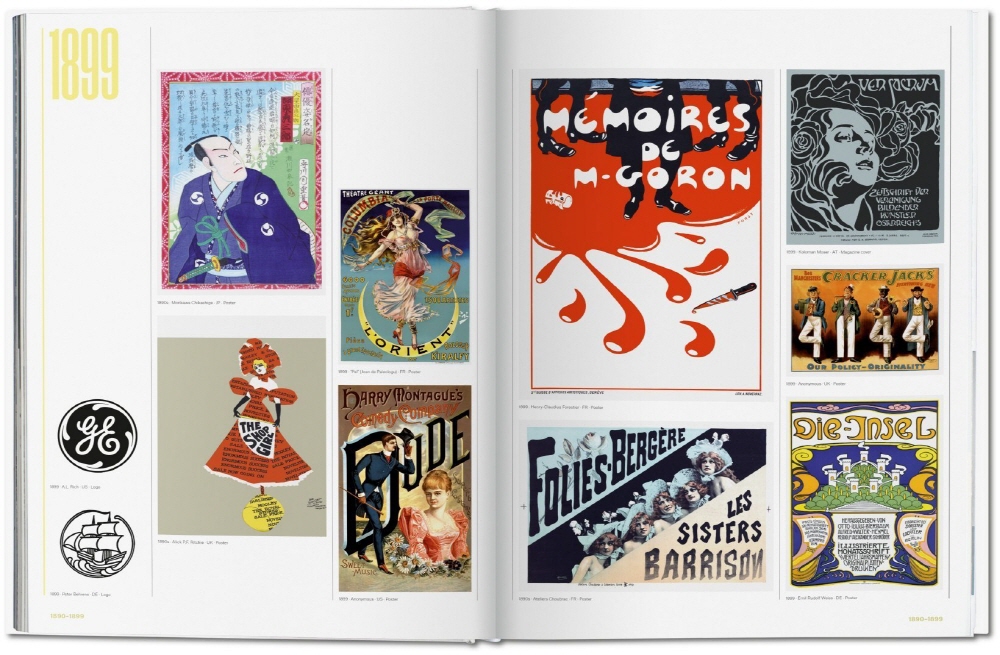
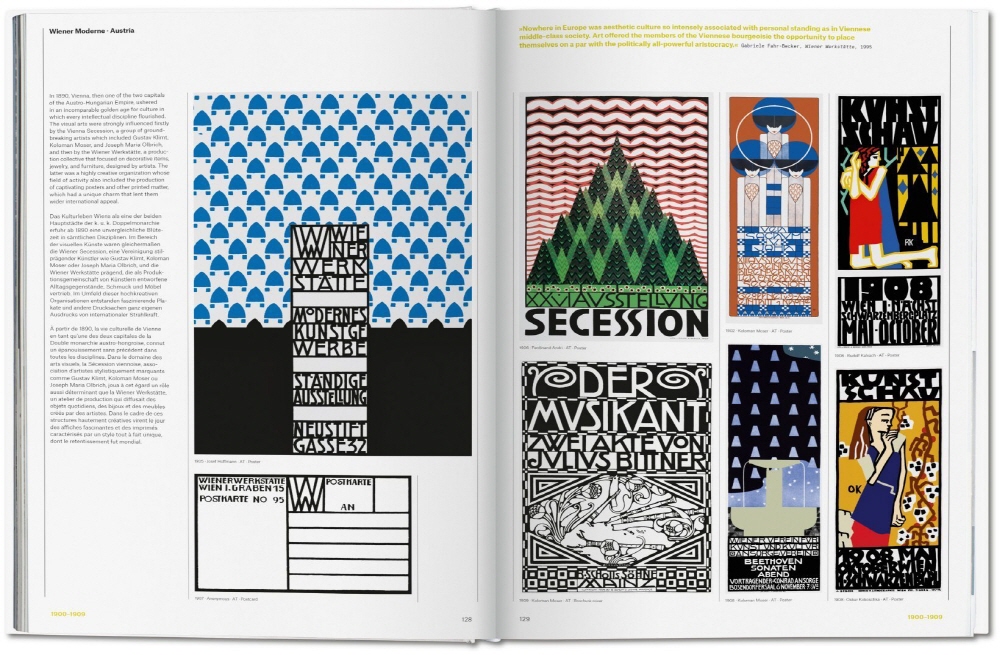
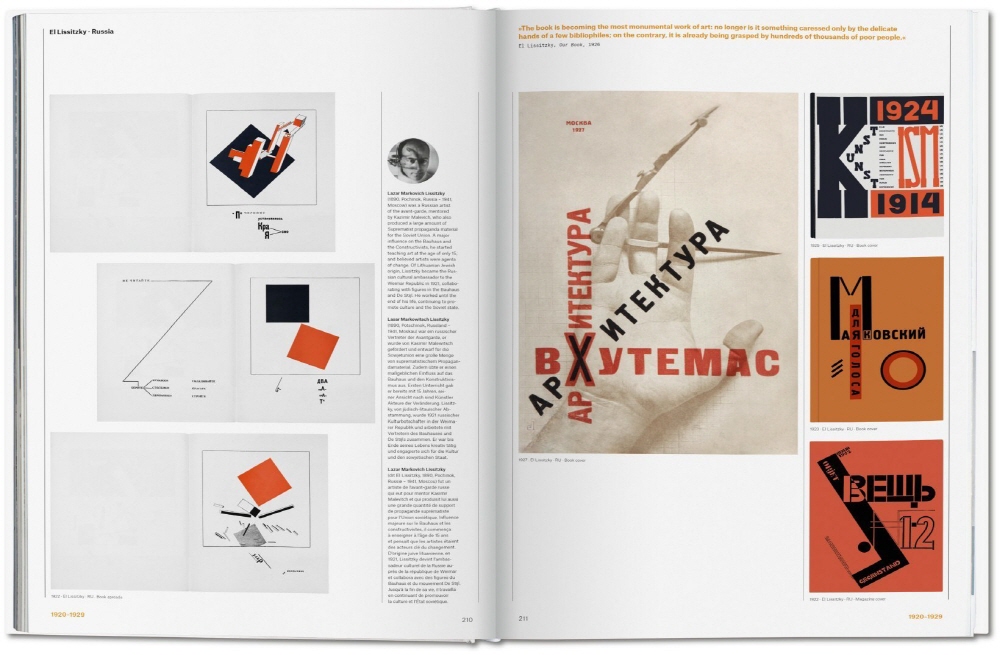
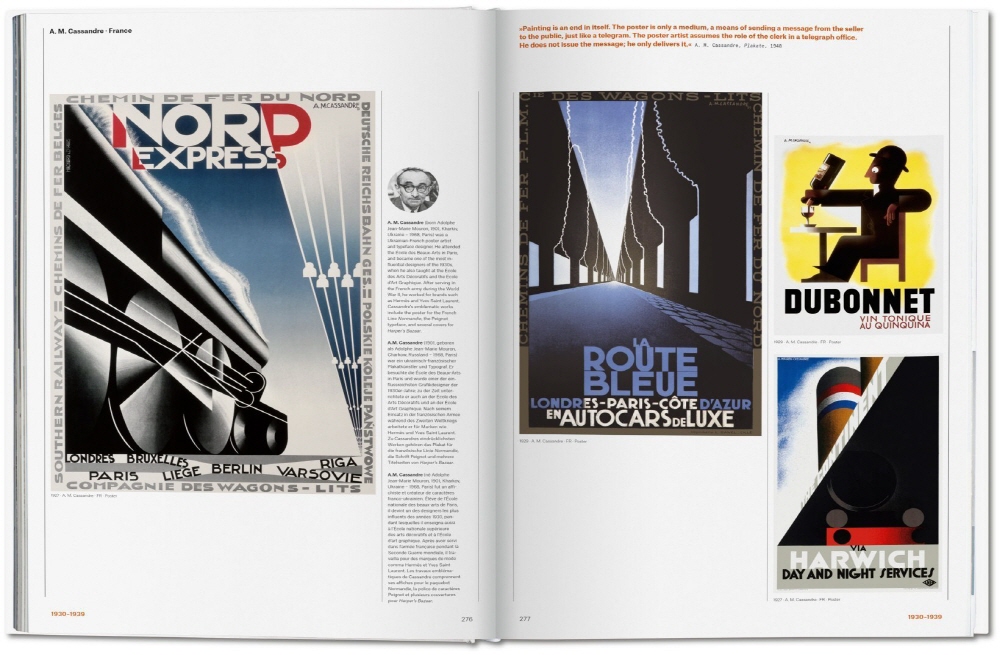
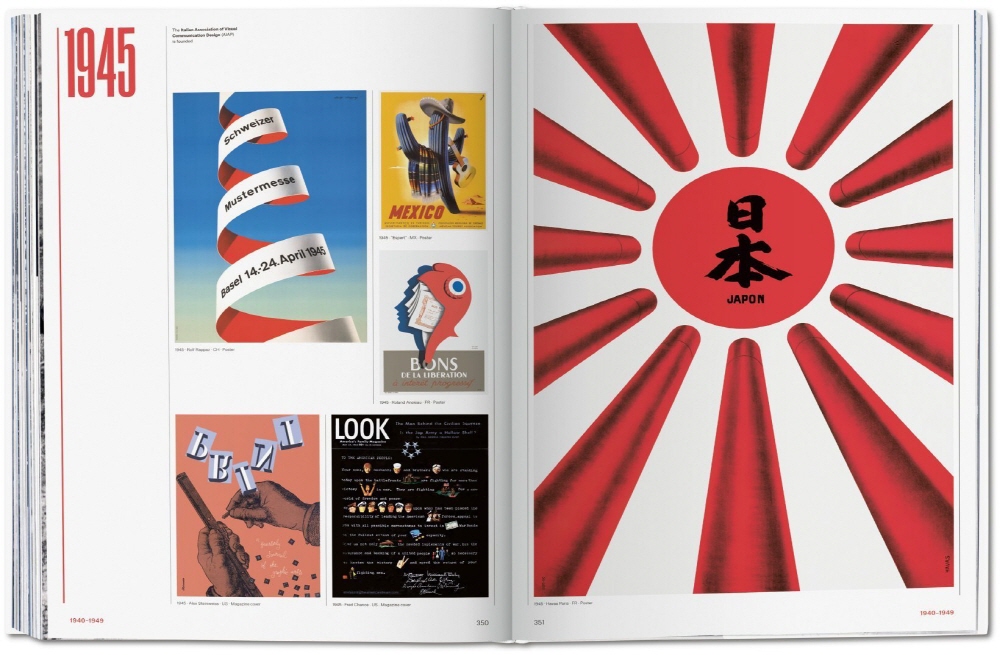
History is a complex business. Fortunes boom and bust, empires wax and wane, and change—whether social, political, or technological—has its winners, its losers, its advocates, and its enemies. Through all the turbulent passage of time, graphic design—with its vivid, neat synthesis of image and idea—has distilled the spirit of each age.
This book offers a comprehensive history of graphic design from the end of the 19th century to the remains of World War II. It traces the evolution of this creative field from its beginning as poster design to its further development into advertising, corporate identity, packaging, and editorial design. Organized chronologically, the volume features over 2,500 seminal designs from all over the world, 71 of which are profiled in detail besides 61 leaders in the field, including Alphonse Mucha (chocolate advertisements), Edward Johnston (London Underground logo and typeface), El Lissitzky (constructivist graphics), Herbert Matter (photomontage travel posters from Switzerland), Saul Bass (animated opening titles), and A. M. Cassandre (art deco posters).
With his sweeping knowledge of the field, author Jens Müller curates the standout designs for each year alongside a running sequence of design milestones. Meanwhile, in his introductory essay, David Jury situates graphic design from its point of origin in early printing, engraving, and lithography to striking creative developments in the 19th century. Each consecutive decade is then prefaced by a succinct overview as well as a stunning visual timeline, offering a vivid display of the variety of graphic production in each decade as well as the global landscape which it at once described and defined.
As we move on from and reflect upon the 20th century, this staggering collection represents the foundations of what would influence some of the fastest changing creative fields, and a long-overdue recognition of the enormous contribution graphic design has made to economics, politics, social causes, arts, media, and the way we see the world.
A second volume in preparation will cover the period from 1960 to today.






The author
젠스 뮐러(Jens Müller)는 1982년 독일 코블렌츠 출생으로 뒤셀도르프에서 그래픽 디자인을 전공했다. 다양한 국내외 디자인 어워드에서 수상했으며, 옵틱 디자인 스튜디오의 디렉터이자 그래픽 디자인 역사 과련 A5 북 시리즈의 에디터로 활동하고 있다. 뒤셀도르프의 Peter Behrens School of Arts에서 객원 강사로 그래픽 디자인 역사와 에디토리얼 디자인을 가르치고 있다.
The editor:
Julius Wiedemann은 브라질 출신으로 그래픽 디자인과 마케팅을 공부했으며, 도쿄의 디지털과 디자인 잡지의 미술 담당 편집자로 일했다. Illustration Now!, Advertising Now, Logo Design 그리고 Brand Identity Now!를 포함한 TASCHEN의 많은 디지털과 미디어 서적들을 집필했다.
젠스 뮐러(Jens Müller)는 1982년 독일 코블렌츠 출생으로 뒤셀도르프에서 그래픽 디자인을 전공했다. 다양한 국내외 디자인 어워드에서 수상했으며, 옵틱 디자인 스튜디오의 디렉터이자 그래픽 디자인 역사 과련 A5 북 시리즈의 에디터로 활동하고 있다. 뒤셀도르프의 Peter Behrens School of Arts에서 객원 강사로 그래픽 디자인 역사와 에디토리얼 디자인을 가르치고 있다.
The editor:
Julius Wiedemann은 브라질 출신으로 그래픽 디자인과 마케팅을 공부했으며, 도쿄의 디지털과 디자인 잡지의 미술 담당 편집자로 일했다. Illustration Now!, Advertising Now, Logo Design 그리고 Brand Identity Now!를 포함한 TASCHEN의 많은 디지털과 미디어 서적들을 집필했다.
 |





